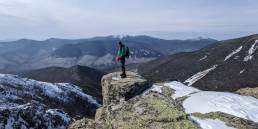For many people, just getting to the top of a New Hampshire 4,000-footer is a big accomplishment. For others, summiting all 48 of the state’s 4,000-footers is the ultimate goal and a sign that you’ve “made it” as a New England hiker. A select few have even loftier White Mountain ambitions and seek to tick the boxes on New Hampshire’s hardest hiking checklists.
Whether it’s new linkups, exploring trails in different seasons, or taking different trails, it seems that hikers in New Hampshire continue to find new ways to push out of their comfort zones, tackle new physical challenges, and arrive back to the trailhead with a blend of jubilation and exhaustion.
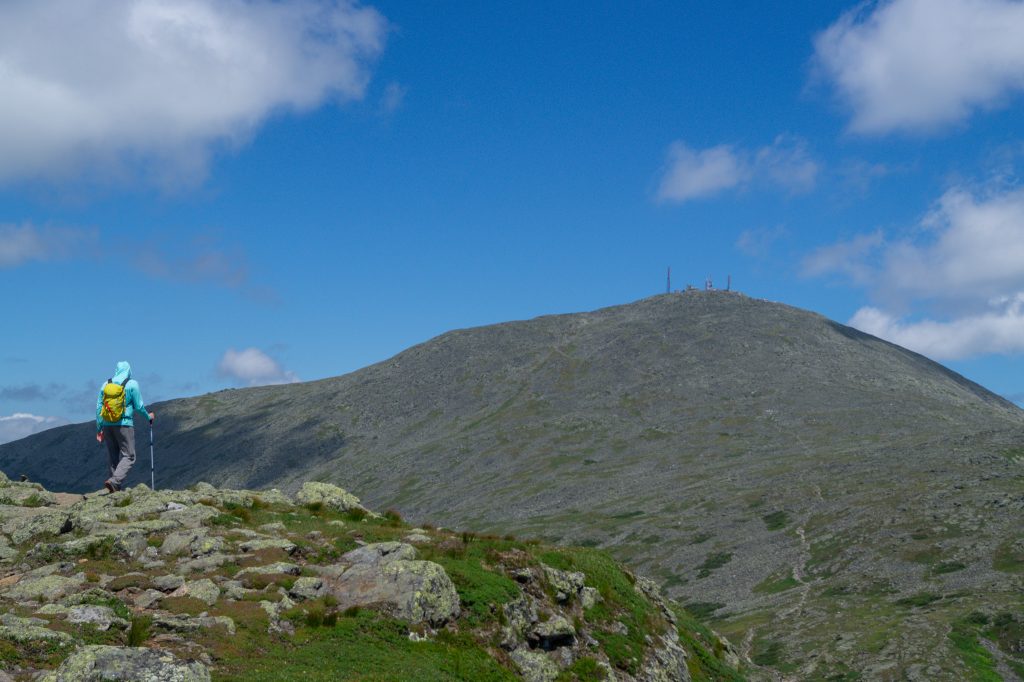
Hardest Hikes in the White Mountains
Classic hikes like the Presidential Traverse and Pemi Loop have long been at the top of White Mountain hikers’ bucket lists, but in recent years even more audacious goals have bubbled up as hikers find new ways to up the challenge.
Presidential Traverse
The 18+ mile Presidential Traverse is the classic long hike in the White Mountains. The route climbs over 8,500 feet while summiting seven New Hampshire 4,000-footers: Madison, Adams, Jefferson, Washington, Monroe, Eisenhower, and Pierce. Some go-getters even continue the extra couple of miles to tag the summit of Mount Jackson.
Carter-Moriah-Wildcat Traverse
Although the Presidential Traverse gets most of the attention and has more climbing, many insist that a Carter-Moriah-Wildcat Traverse is more difficult. Its challenging reputation is thanks to its steep, rocky trails and 7,200 feet of climbing taking hikers over six 4,000-foot summits: Moriah, South Carter, Middle Carter, Carter Dome, Wildcat A, and Wildcat D. What makes this traverse particularly challenging is that near its middle, at Carter Notch, hikers lose and must regain a significant amount of elevation.
Pemi Loop
While traverses are great, sometimes you want to go big but only have access to one car. Here is where the Pemi Loop rules. The lollipop loop combines two of the White Mountains’ other classic traverses—Franconia Ridge and the Bonds—into what Backpacker Magazine has dubbed the country’s second-hardest day hike.
Covering over 30 miles and 9,000 feet of elevation gain, this legendary loop tags the summits of nine New Hampshire 4,000-footers: Flume, Liberty, Lincoln, Lafayette, Garfield, South Twin, West Bond, Bond, and Bondcliff. Hard-driving hikers often also add the summits of Galehead, Zealand, and North Twin for an almost 40-mile day that summits 12 peaks.
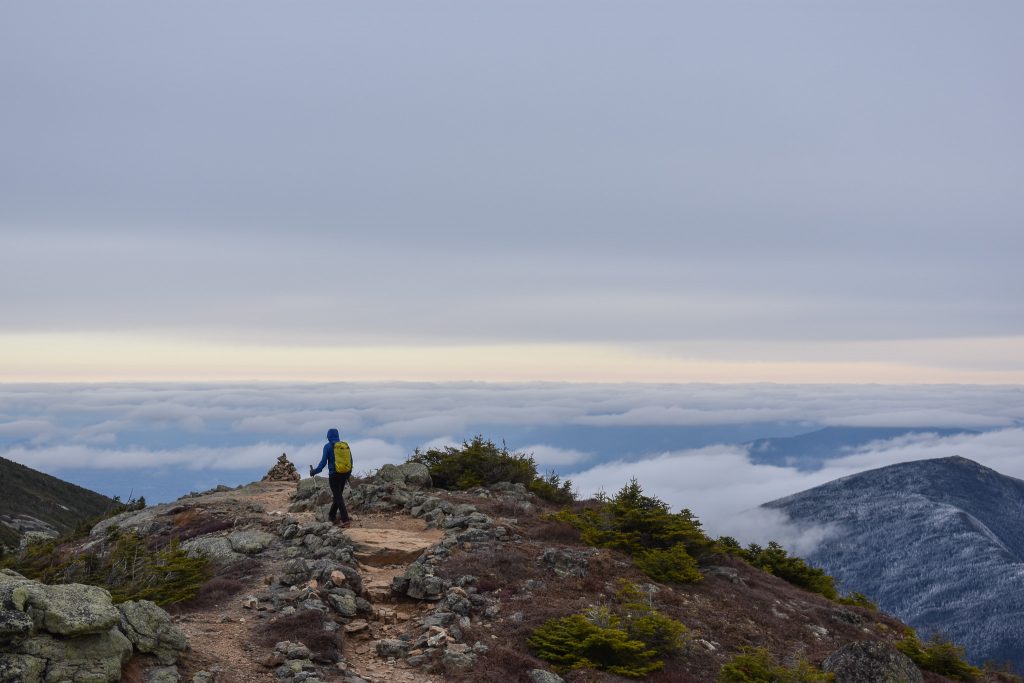
Single-Push White Mountain Challenges
In recent years, hikers not satisfied with ticking off the region’s classic hikes and backpacking routes have concocted a variety of hard, single-push efforts.
White Mountain Direttissima
“Direttissima” means the most direct route, which nicely sums up this 250+ mile route that climbs more than 8,000 feet while tagging the summits of all 48 4,000-footers in one continuous route. The idea of a White Mountain Direttissima dates back to the late 1960s/early 1970s when the route was completed by Henry T. Folsom over 19 non-continuous days and often returning home at night.
In recent years, it’s become popular to tackle the White Mountain Direttissima in one massive push. The hard effort required to complete the Diretissma has attracted some of the most notable names in White Mountain hiking, including Will Robinson, Andrew Drummond, Philip Carcia, and Andrew Soares.
Unlike other White Mountain challenges, there isn’t an official Direttissima route nor does it have an overseeing body. Rather, hikers can choose their own path following hiking, snowmobile, and cross-country ski trails, along with roads or bushwacking. And while most hardcore hikers tackle this challenge in a one-push, there’s no rule against taking your time and biting it off in smaller chunks.
White Mountains Wilderness Route
Notable White Mountain hikers Philip Carcia, otherwise known as “Finding Philip,” and Andrew Soares pioneered the White Mountain Wilderness Route (WMWR) in July 2023. This ambitious track avoids the area’s more commonly traveled trails while passing through the six federally designated wilderness areas in the White Mountains National Forest:
- Caribou-Speckled Wilderness
- Wild River Wilderness
- Great Gulf Wilderness
- Presidential Range-Dry River Wilderness
- Pemigewasset Wilderness
- Sandwich Range Wilderness
Covering roughly 115 miles and climbing approximately 30,000 feet, there’s no doubt that the WMWR will push even the fittest hikers to their limits. On his website, Carcia has divided the route into five sections, however, he and Soares completed the route in 84 hours.
Skyline Loop
The Skyline Loop is another of the Granite State’s newer hiking challenges. The loop travels roughly 34 miles and climbs about 10,000 feet while taking in the best Waterville Valley has to offer—from 4,000-foot summits to remote lakes to quiet swimming holes.
Most hikers will tackle the traverse over two days, bagging the peaks of Mount Osceola, East Osceola, North Tripyramid, Middle Tripyramid, and Mount Tecumseh. Quick hikers, however, have been known to complete the trip in less than half a day.
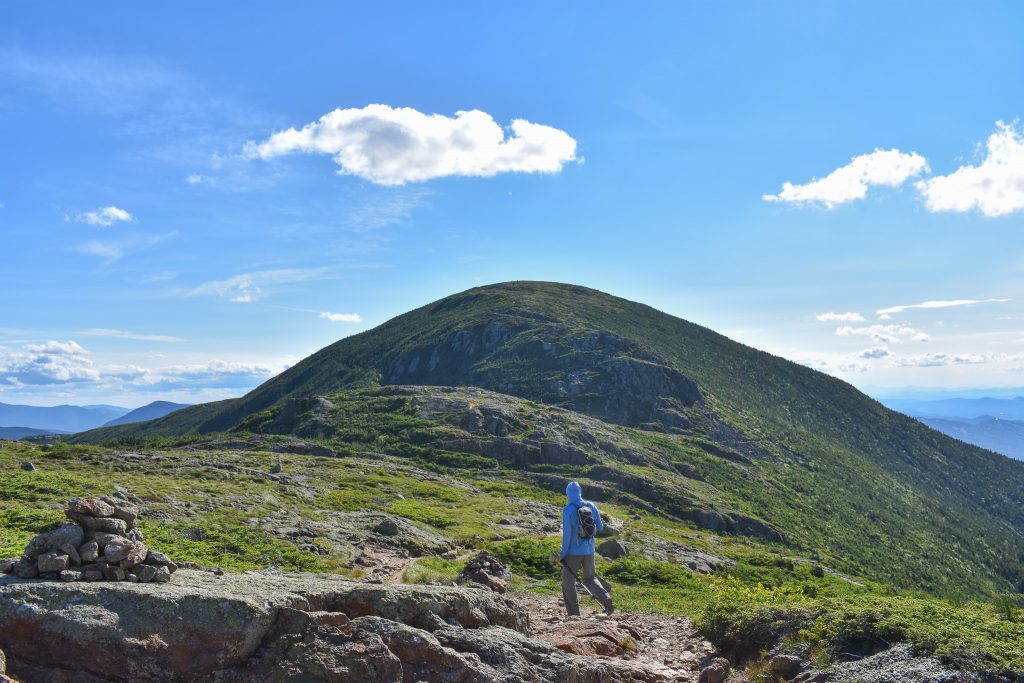
Long-Term White Mountain Hiking Challenges
Long hikes and single pushes present a huge big challenge, but they can all feasibly be done in a relatively small amount of time. Many White mountain hikers have longer-term aspirations greater than done-in-a-day goals.
Gridding
Gridding has become a favorite of hikers looking for a longer-term commitment. Gridding involves hiking every New Hampshire 4,000-footer in every month of the year—that’s 576 summits for those who like to check boxes.
For most mortals, gridding is considered a multi-year objective, however, in 2016, Sue Johnston of Littleton, New Hampshire, became the first person to climb all 48 peaks every month in a single year (she also has the distinction of being the first person to complete a grid, doing so in 2003).
According to the definitive website for gridders, 48×12.com, approximately 170 hikers have completed the checklist and a little more than 20 have completed more than one grid. Named for the 48×12 spreadsheet used to document ascents, gridding adds the challenge of facing every mountain in all possible conditions, from snow and ice to heat and humidity and everything in between.
Tracing
While many White Mountain hiking checklists are focused on summiting the region’s highest peaks, tracing tasks hikers to cover every mile of every trail found in the AMC White Mountain Guide, including viewpoints, spurs, and campsites.
Hikers tracing in the White Mountains need to cover roughly 1,420 miles. However, most cover substantially more ground since many trails are out-and-backs or crisscross other trails. More than 100 hikers have completed this audacious goal, including EMS customer Bill Robichaud, who was featured on goEast in 2015.
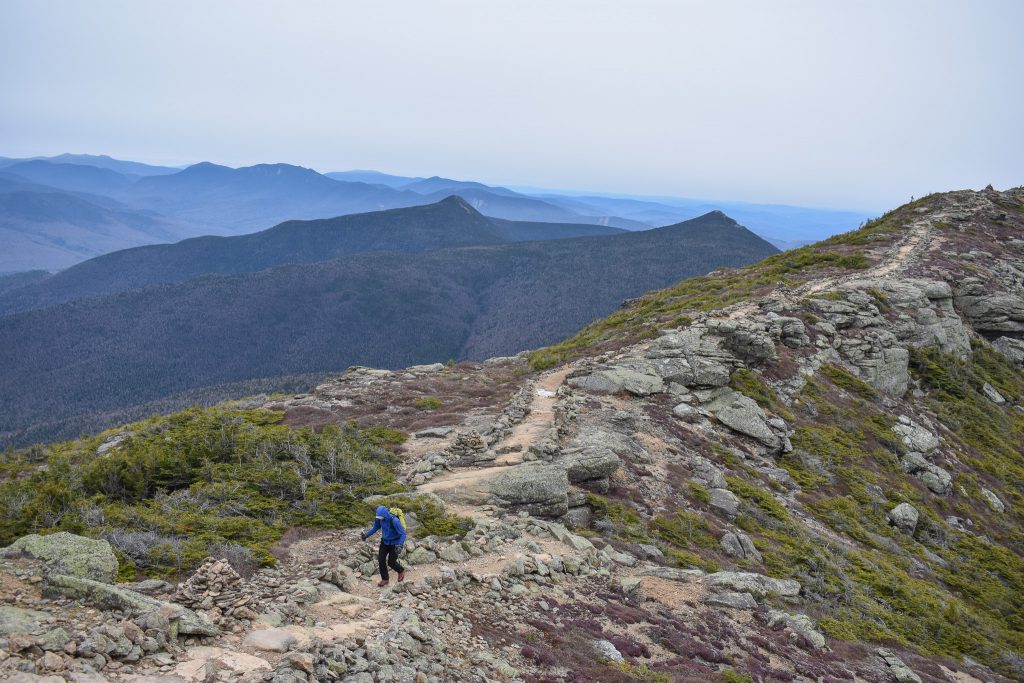
Bring It Home
Summiting all of New Hampshire’s 4,000-footers is an incredible accomplishment, but you don’t have to stop there! New Hampshire’s White Mountains can be explored and experienced in so many different ways. Whether you want to repeat your favorites, tackle the hardest, grid, trace, or invent some new way to keep the challenge alive, remember that the 48th summit doesn’t have to be your last.
Tim Peck and Doug Martland
Tim and Doug met long ago at the Eastern Mountain Sports in Canton, Massachusetts. Bonding over a love of slick Quincy Quarry granite, White Mountain sufferfests, and scheming up adventures while folding tee-shirts, today Tim and Doug collaborate to write about their favorite outdoor activities and occasionally get nostalgic about tee-shirt tables.
Related Posts
April 12, 2024
Explore Like a Local: The Outdoor Mecca of North Conway, NH
There's a lot to love about this New…
April 3, 2024
5 Things To Do in the Boston Area During Mud Season
Adventure opportunities are abundant…




